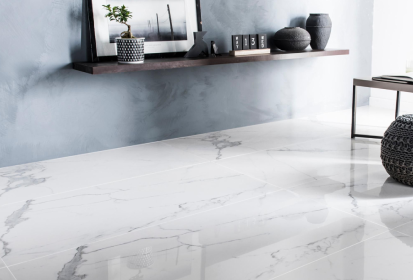
Porcelain vs Ceramic Tiles Which One is Right for Your Project
When selecting tiles for your next renovation or construction project, the choice between porcelain vs ceramic tiles can significantly impact durability, aesthetics, and budget. Both materials are popular for flooring, walls, and backsplashes, but they differ in composition, performance, and ideal applications. In this comprehensive EDDICA tile guide, we’ll break down the key differences, benefits, and best use cases to help you make an informed decision. Whether you're a homeowner, interior designer, or contractor, understanding these distinctions ensures you select the best tiles for flooring and other surfaces.
1. What Are Porcelain and Ceramic Tiles?
Ceramic Tiles: Affordable and Versatile
Ceramic tiles are crafted from natural clay (red or white) mixed with minerals and water, then kiln-fired at lower temperatures (around 1,800°F). They are typically coated with a durable glaze that provides color and pattern options.
Key Characteristics:
- Cost-Effective: Generally cheaper than porcelain, making them ideal for budget-friendly projects.
- Easier to Cut & Install: Softer composition allows for straightforward DIY installation.
- Design Variety: Available in countless colors, textures, and finishes.
However, ceramic tiles are more porous than porcelain, making them less resistant to moisture and heavy wear. They are best suited for low-to-medium traffic areas, such as residential bathrooms, kitchens, and decorative walls.
Porcelain Tiles: Durable and High-Performance
Porcelain tiles are made from denser, refined clay and fired at much higher temperatures (up to 2,500°F). This process makes them harder, less porous, and more resistant to water, stains, and scratches.
Key Characteristics:
- Extreme Durability: Ideal for high-traffic commercial spaces, outdoor patios, and wet areas.
- Low Water Absorption: Less than 0.5% absorption rate, making them frost-resistant.
- Luxury Aesthetics: Can mimic natural stone, wood, or concrete for high-end designs.
Due to their density, porcelain tiles are harder to cut and typically require professional installation. They are a long-term investment, often justifying their higher upfront cost with extended lifespan and minimal maintenance.
2. Key Differences: Porcelain vs. Ceramic Tiles
|
Factor |
Ceramic Tiles |
Porcelain Tiles |
|
Durability |
Good for light-to-medium use |
Excellent for heavy commercial use |
|
Water Resistance |
Moderate (needs sealing in wet areas) |
Highly resistant (ideal for bathrooms, pools) |
|
Cost |
$2–$5 per sq. ft. |
$5–$10 per sq. ft. |
|
Installation |
Easier, DIY-friendly |
Harder, may require professionals |
|
Maintenance |
Requires occasional sealing |
Nearly maintenance-free |
3. Best Applications: Where to Use Each Tile
When to Choose Ceramic Tiles
- Residential Interiors: Kitchens, bathroom walls, and low-traffic living spaces.
- Budget-Friendly Projects: Cost-effective for large areas where high durability isn’t critical.
- Decorative Walls & Backsplashes: Wide variety of colors and patterns for creative designs.
-
When to Choose Porcelain Tiles
- High-Traffic Areas: Shopping malls, hotels, and office lobbies.
- Outdoor & Wet Environments: Patios, pool decks, and commercial bathrooms.
- Luxury & High-End Designs: Wood-look, marble-effect, and large-format tiles.
Case Study: A luxury hotel chain reduced long-term maintenance costs by 40% after switching to EDDICA’s porcelain tiles in high-traffic lobby areas.
4. Design Flexibility: Which Offers More Style Options?
Ceramic Tiles: Vibrant and Customizable
- Glazed finishes allow for bold colors, intricate patterns, and glossy/matte textures.
- Perfect for Mediterranean, rustic, or contemporary styles.
Porcelain Tiles: Premium and Realistic Finishes
- Advanced digital printing replicates natural materials like marble, wood, and slate.
- Large-format porcelain slabs create seamless, modern looks.
"EDDICA’s wood-look porcelain tiles combine the elegance of hardwood with the durability of stone ideal for both homes and commercial spaces."
5. Installation & Maintenance: What You Need to Know
Ceramic Tile Installation
-
Easier to Cut: Can be scored and snapped with a tile cutter.
-
Thinner & Lighter: Simplifies handling and adhesive application.
-
Maintenance Tips:
-
Seal grout lines in wet areas.
-
Avoid harsh cleaners to preserve glaze.
-
Porcelain Tile Installation
-
Requires Specialized Tools: Diamond-tipped blades for cutting.
-
Heavier & Thicker: May need additional subfloor support.
-
Maintenance Tips:
-
Resistant to stains—simple sweeping and mopping suffice.
-
No sealing required in most cases.
-
